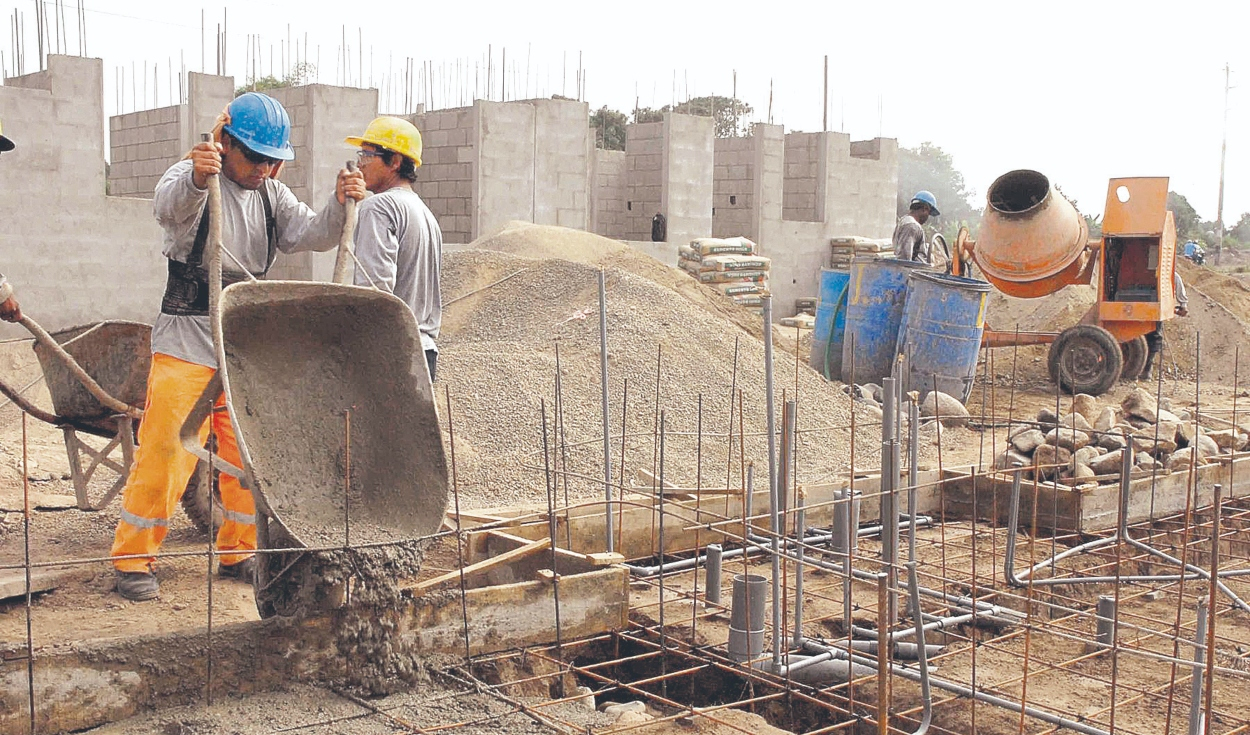
In January and February of this 2024, the construction GDP rose 2.9% and 6.4%, respectively, so, although in March it would have fallen 6.1%, the first quarter will end with a variation of 3.8% compared to the same period last year, according to the Peruvian Chamber of Construction (Capeco).
Thus, the streak of four consecutive negative quarters would finally be broken. Guido Valdivia, president of the union, recalls that cement consumption – one of the main indicators that measures construction activity – has been in the red for 18 of the last 19 months: only last January it rebounded to 9.3% but, towards March, would have fallen to -8.4%. It is estimated that cement consumption will end the first quarter with a decrease of 0.1%. On the other hand, the progress of public works would have barely risen 0.3% in March, its worst result since November 2023 (-7.8%).
On track
After a 2023 where construction fell 7.9%, entities such as the Ministry of Economy and Finance (MEF) and the Central Reserve Bank (BCRP) is expected to rise slightly above 3.0% this year, although Capeco expects a more auspicious rebound: 3.9%.
“For this year there is no rain, mining investment is reactivated, there is an important portfolio of PPP projects (public-private partnership) and interest rates are reduced (…) All this helps significantly but it is not what we need to close gaps,” said Valdivia in reference to the distance from the double-digit growth rates seen more ago. of a decade. According to Capecoconstruction companies remain optimistic for this year, showing an average of 3.9%—six percentage points more than in December—and by segment, infrastructure companies foresee a better outlook (4.8%).
Costs stabilize
Another factor that will catapult the sector is the stabilization of costs. In March, general inflation increased 1.01% compared to February and materials inflation fell 0.42%. The gap between both indicators is the lowest since November 2020.
As of March of this year and in year-on-year terms, the price of brick shows a drop of 8.2%, followed by steel (-0.7%); while tile rose 0.3% and cement rose 1.6%. The most pronounced increase is in labor (5.3%). Still, for suppliers, materials prices fell 0.8% in the last six months, but home prices rose more than expected.
“Input prices have fallen slightly for months. They remain high, but as they stabilize, promoters try to recover some of the lost margin. We know that if material costs grow, housing prices, especially social housing, cannot rise in the same proportion,” he added.
Data
Recoil. Construction employment fell for the third consecutive moving quarter (-7.7%). It is the worst result in the last seven years.
Trend. Underemployment in construction, from January to March, grew 9.8% (totaling 114,500 people) and adequate employment contracted 13.5% (273,900 people) compared to the same period in 2023.expectation. The Construction Guild projects an annual variation of 3.9%.
Source: Larepublica
Alia is a professional author and journalist, working at 247 news agency. She writes on various topics from economy news to general interest pieces, providing readers with relevant and informative content. With years of experience, she brings a unique perspective and in-depth analysis to her work.











